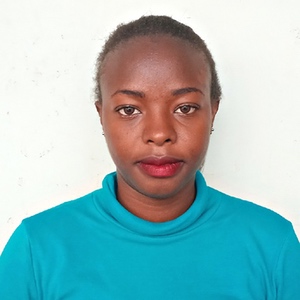Gidagadi Secondary School just opened three years ago at the end of 2014. It opened for the same reason many secondary schools do; students from the primary school needed a place to continue their education. It currently has an enrollment of 90 students who are taught by five teachers. The school also employs two support staff.
Students arrive as early as 6:30am to clean their classrooms and pick up the school grounds. Study hall begins at 7:30am and is followed by normal classes before lunch. The school cook prepares a mixture of beans and maize so that students don't have to walk all the way back home.
There are afternoon classes and then an hour of sports and games until students are released at 5pm.
Water
Both Gidagadi Primary and Secondary are headed by the same person. She told us that "soon, the secondary section will have its own Principal because it has finally been registered to stand on its own."
However, it doesn't have any of its own facilities. Not water sources or storage, no hygiene facilities, and no latrines.
Students must leave school to find water. The most convenient water source is Anusu Spring, where water bubbles up and pools at the surface. Students dunk their jerrycans (they're not even their containers, they're borrowing them from the primary students) under the surface to fill them with dirty water.
This water is used for drinking, cooking, and cleaning. The principal said she will be more than thankful for additional facilities.
"The students waste a lot of time going to Anusu Spring to fetch water. We create time between lessons to go and fetch water, which interferes with the program. It also affects them academically, with lower performance. I will really be grateful," she said.
Sanitation
Gidagadi Secondary shares latrines with the primary section. These are already in bad condition, and the secondary students feel they need to defer to the primary students. We observed that quite a few of these latrines look like they're about to collapse.
"Our school does not have sufficient sanitation facilities right now. They share the latrines with the primary section," Principal Lamka said.
"As an institution, we lag behind as far as health and hygiene standards are concerned."
There are no handwashing stations, nor is there the water to fill them.
The secondary school's cook is also working from the primary school's kitchen. As for something positive, we found a well-constructed dish rack to safely dry kitchen utensils up off the ground.
Here's what we're going to do about it:
Training
There will be two days for teachers, students, and parents to meet at the school to learn about hygiene and sanitation practices. They will also attend sessions on the management and maintenance of their new rainwater catchment tank, latrines, and hand-washing stations. We will use all of our training topics to empower participants to invest their time in positive behaviors that promote health, prolong life, and enable them to become more self-reliant citizens.
The facilitator will use PHAST (participatory hygiene and sanitation transformation), ABCD (asset-based community development), CTC (child to child), lectures, group discussions, and handouts to teach health topics and ways to promote good practices within the school. The CTC method will prepare students to lead other students into healthy habits, as well as kickstart a CTC club for the school.
Handwashing Stations
The two handwashing stations are 50-liter plastic barrels on metal stands, and each has a tap to conserve water. These are often delivered by hygiene and sanitation training so they can be used for demonstrations but always arrive by a project’s completion.
The CTC club will be in charge of filling these stations with water and will ensure that there is always a cleaning agent like soap or ash.
VIP Latrines
Two triple-door latrines will be constructed with local materials that the school will help gather. Three doors will be set aside for each gender. And with a new source of water on school grounds, students and staff should have enough to keep these new latrines clean.
Rainwater Catchment Tank
A 50,000-liter rainwater catchment tank will help alleviate the water crisis at this school. The school will also help gather the needed materials such as sand, rocks, and water from the spring for mixing cement. Once finished, this tank can begin catching rainfall that will be used by the school’s students and staff. Students will no longer waste valuable time journeying back and forth to fetch dirty water.
We and the school strongly believe that with this assistance, standards will significantly improve. These higher standards will translate to better academic performance for these scholars!

 Rainwater Catchment
Rainwater Catchment
 Rehabilitation Project
Rehabilitation Project






































